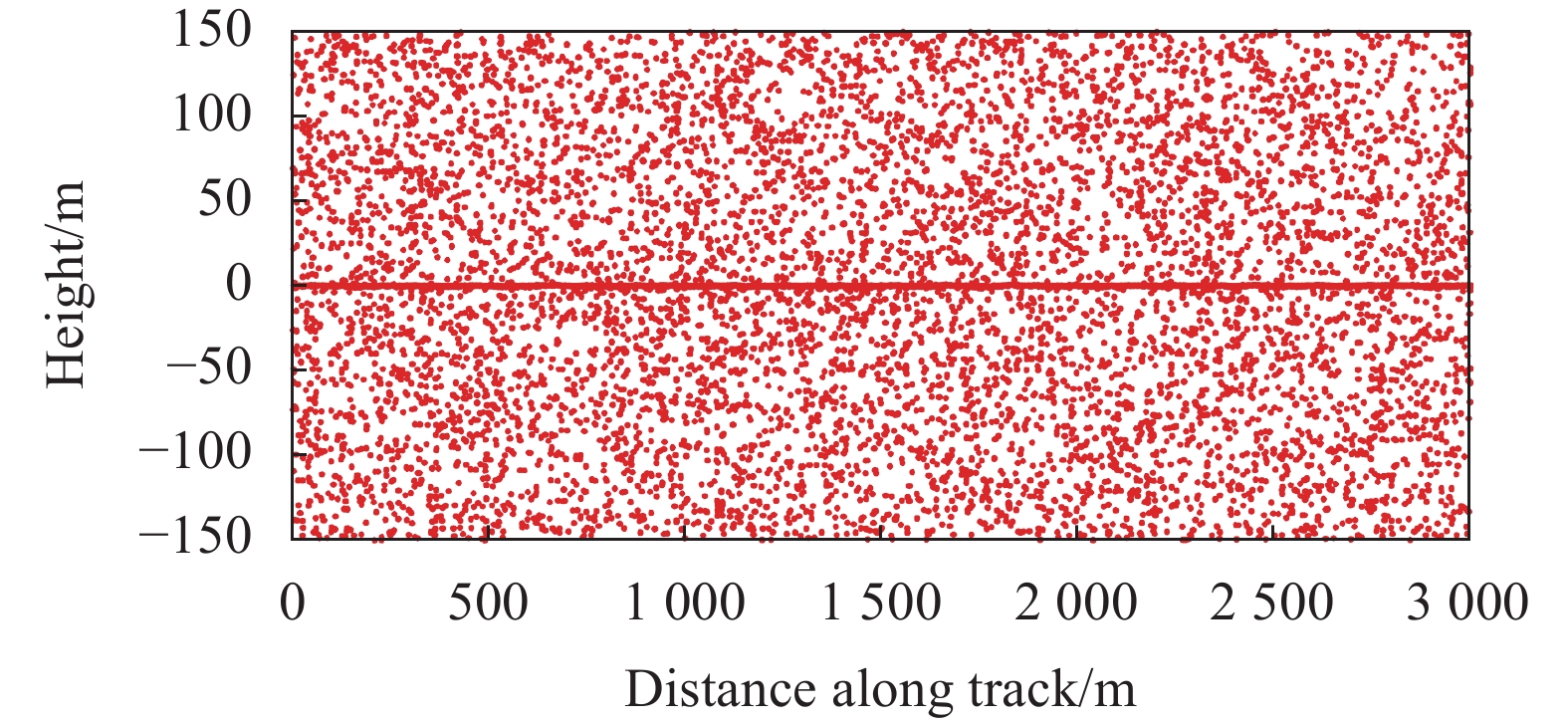Zhibiao Zhou, Hui Zhou, Yue Ma, Yue Song, Song Li. ICESat-2 lidar sea surface signal extraction and ocean wave element calculation[J]. Infrared and Laser Engineering, 2023, 52(2): 20220366
Search by keywords or author
- Infrared and Laser Engineering
- Vol. 52, Issue 2, 20220366 (2023)

Fig. 1. Point cloud diagram of ATLAS

Fig. 2. Neighborhood diagram of calculating point density
Fig. 3. Flow chart of sea surface signal extraction
Fig. 4. Point cloud diagram after rough extraction
Fig. 5. Point cloud diagram after refined extraction
Fig. 6. The sea surface signal extraction results: the red points are the original point clouds, and the black points are the sea surface signal points extracted by the method in this paper. (a1) Daytime original point cloud; (a2) Extracted result of daytime point cloud; (b1) Nighttime original point cloud; (b2) Extracted result of nighttime point cloud
Fig. 7. (a) Result of obtaining the sea surface profile; (b) Enlarged view of the blue box area of the obtained result of the sea surface profile
Fig. 8. Amplitude-frequency diagram of sea surface profile obtained by FFT transformation
|
Table 1. Parameters and calculation results of the study area
|
Table 2. Comparison of peak wave period errors calculated by the method in this paper and the sea surface signal photons extracted with the official ATL03 high confidence data

Set citation alerts for the article
Please enter your email address



